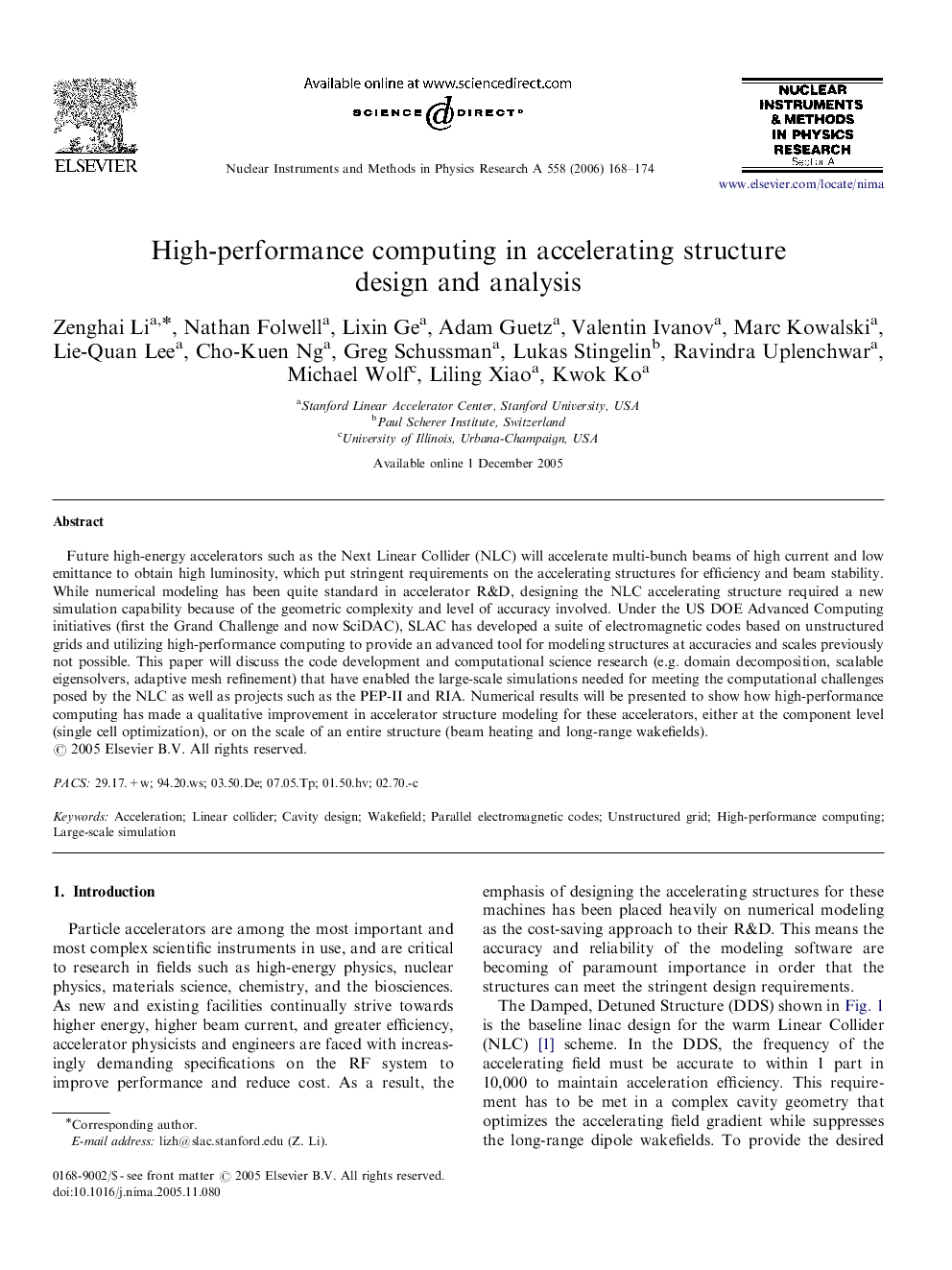| Article ID | Journal | Published Year | Pages | File Type |
|---|---|---|---|---|
| 1833441 | Nuclear Instruments and Methods in Physics Research Section A: Accelerators, Spectrometers, Detectors and Associated Equipment | 2006 | 7 Pages |
Future high-energy accelerators such as the Next Linear Collider (NLC) will accelerate multi-bunch beams of high current and low emittance to obtain high luminosity, which put stringent requirements on the accelerating structures for efficiency and beam stability. While numerical modeling has been quite standard in accelerator R&D, designing the NLC accelerating structure required a new simulation capability because of the geometric complexity and level of accuracy involved. Under the US DOE Advanced Computing initiatives (first the Grand Challenge and now SciDAC), SLAC has developed a suite of electromagnetic codes based on unstructured grids and utilizing high-performance computing to provide an advanced tool for modeling structures at accuracies and scales previously not possible. This paper will discuss the code development and computational science research (e.g. domain decomposition, scalable eigensolvers, adaptive mesh refinement) that have enabled the large-scale simulations needed for meeting the computational challenges posed by the NLC as well as projects such as the PEP-II and RIA. Numerical results will be presented to show how high-performance computing has made a qualitative improvement in accelerator structure modeling for these accelerators, either at the component level (single cell optimization), or on the scale of an entire structure (beam heating and long-range wakefields).
